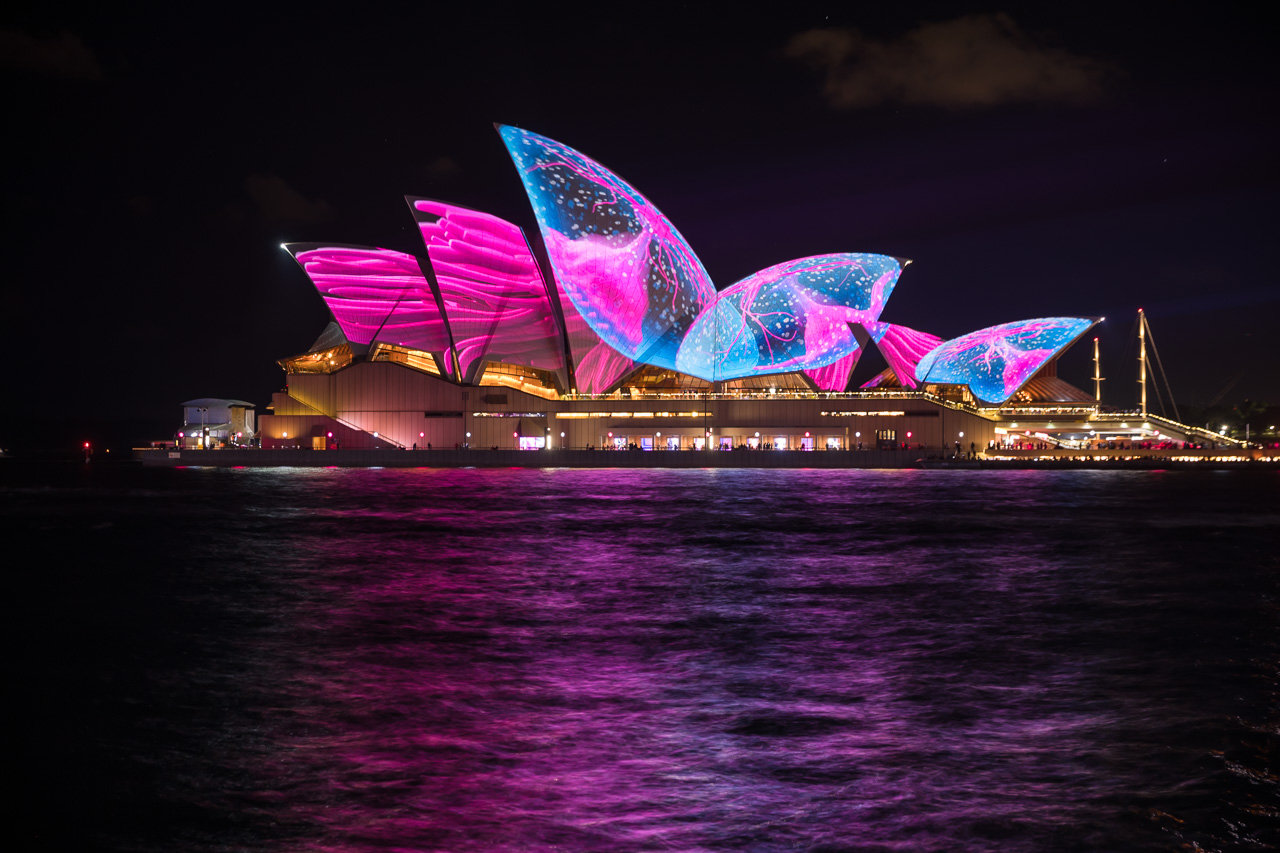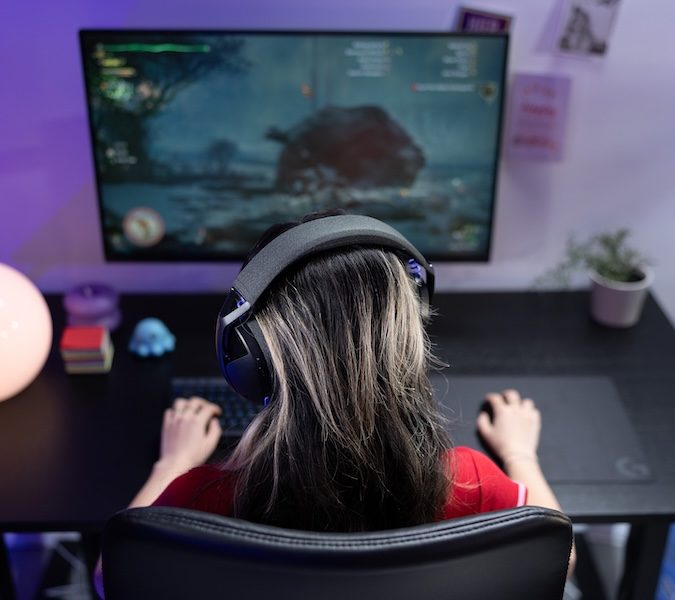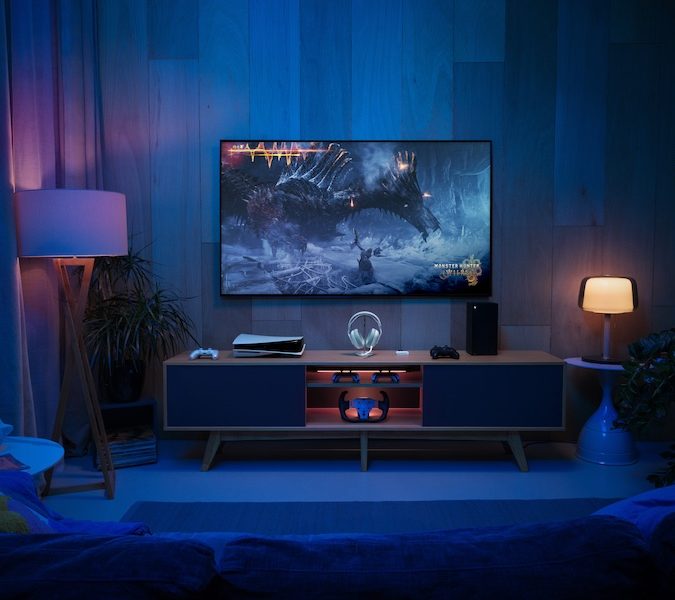
AUDIO CREATURES
Ash Bolland
Synonymous with Australia’s most populous city, the Sydney Opera House is a tourist attraction, concert hall and architectural marvel all rolled into one. Every year for three weeks, the exterior of Jorn Utzon’s iconic structure transforms into a canvas for light and sound for Vivid Live, and, this year, it was expat New Zealander Ash Bolland who was handed the creative reins for the annual festival.
Prior to this, had you ever worked with projection mapping before?
I’d done a lot of work with 3D and visual effects, and I’d also worked with projection mapping within live action and films. So the idea of it and how it worked wasn’t unique to me. The only thing was that it was actually on a physical object rather than a virtual one.
Audio Creatures is this strange, mesmerising and animated loop of colourful visuals. Where did the idea for it come from?
Because I go to the Opera House quite a bit to see bands and artists, I always see it as a place you go to ‘see’ audio. The way I saw it, it was transforming the building into something that’s moving, like a creature, and it’s producing audio. It’s kind of like a metaphor for what the building does.
What methods and technologies did you use to execute Audio Creatures?
I designed all the creatures using pencil and Photoshop, and some of them I did them in 3D. I then initially handed that over to a creative production company called Electric Art that had these 3D models of the Opera House and knew exactly where the projections were going to be. It’s like six projectors and they all become one projector when they’re lined up. So we knew that a simple mask in Photoshop and then a simple camera set up in 3D would work. We’d know where it was in space and distance and everything, so I just did sketches from that.
The Opera House is this incredibly unconventional piece of architecture that’s really different from any other building in the world. Did you encounter any challenges having to deal with the building’s unique shape?
The biggest hurdle design-wise was trying to make it feel like it was actually the shape of the Opera House. In the years before, they hadn’t really considered the Opera House shape and that was something that was really important to me. I wanted to make it feel like it was actually the Opera House transforming. I think when projections can do that, that’s when they’re most successful.
When you walk around the building, the creatures actually deform and distort because it gets a bit weird with projection mapping. But it still totally works because of it’s not a shape that you recognise. If it was live action or something, it wouldn’t work.
I guess the weird shape of the creatures actually plays into the distortion that naturally happens with projection mapping.
Yeah it was awesome. On the last night, I walked around it and looked at all the creatures right up close and at different angles. You just wouldn’t think of drawing like that.
Projection mapping is often about more than just the visual experience, so how did the sound and music component of Audio Creatures come about?
Ben Marshall, who’s the head of contemporary music at the Sydney Opera House and festival director for Vivid Live, asked me which artist I’d like to have. I said I’d like to work with Anwar Tobin who’s an extraordinary electronic artist from the UK who currently lives in San Francisco. He’s considered one of the most innovative electronic artists in the world so I contacted him, sent him some initial sketches, and he was really into it. What he did was reflect and interpret the concept by making the audio that the creatures would be producing.
What do you think is unique about projection mapping that doesn’t exist in other forms of exhibiting art? For example, on the walls of a gallery or through a digital screen?
What I love about projection mapping is it’s like moving sculpture. I think there’s something really neat about that. It’s not like cinema or a TV where you’ve got a square box that you fall into and you’re transported somewhere else. The cool thing about projection mapping is that you’re very much still in the real world. What I liked about projecting imagery onto the Opera House was that all the boats, ferries and visitors could go past. The object was this animated thing, but it’s still in the real world. I think that’s really unique.
Creating something for the public domain must’ve been a refreshing change from the film work you normally do.
The main thing that was really cool was there were so many people taking photographs, which you’d never do with a screen. No one takes photos of the TV or in the cinema, even something public like an outdoor cinema. An outdoor cinema is narrative-driven. You’re there to listen and watch rather than capture. With something like this, people feel like they need to capture it themselves to become their own directors.
.
All photography by Daniel Boud















